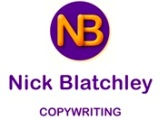You know what it’s like when you meet a potential new customer. You smile, shake hands, say a few words of greeting—and, by that time, they’ve already decided what they think of you. Estimates range from three to seven seconds before someone has made a clear, if subconscious, judgement, but it isn’t long, and it’s difficult to change that impression afterwards. You get one shot at it.
Something similar happens when a potential customer first encounters you online. If they’re not engaged and interested in the first few seconds, the chances are they’ll move on to one of your competitors. Your photo is important, as is the design of your website if that’s where they see you, but what you say about yourself is crucial.
A great profile is vital, whether it’s the very short one on Twitter or a longer piece on Facebook, LinkedIn or your own site. This is the same three (or seven) seconds in which customers decide whether or not you’re a person they want to do business with—except that it’s even easier for them to turn away.
The problem is that speaking and writing aren’t the same thing at all. Speech comes with tone and expression, and most of all with body language, and they’re the elements that convey most to the other person. Writing has none of these to fall back on, and has to compensate with precise, incisive phrasing to carry the equivalent of all those non-verbal aspects of speech.
That’s why writing down exactly what you’d say to a customer face to face won’t work. On the other hand, most people who recognise that tend to overcompensate, ending up with a stiff, unnatural style that works neither as speech nor writing.
In fact, this is closely related to a problem faced regularly by novelists and short-story writers: how to make dialogue seem natural without simply imitating how people speak. Normal conversation is full of “er” and “um”, “like” and “you know”, of stops and starts that convey nothing. Authors must make the reader think their characters are speaking naturally, while giving them dialogue far clearer than anything found in real conversation.
Of course, your face-to-face approach to customers shouldn’t include too many ers and ums, but even so writing something that reads on the page (or the screen) like you talking about your business isn’t easy. This is a time to call in an expert, just as you’d call in an accountant or a lawyer if you need their specialist services. A good copywriter can make your profile read as if you really were there talking to your customers.
In the end, the judgement your customer makes of you will depend on your personality and theirs. But, just like a firm handshake, a professionally written profile will meet them halfway.
